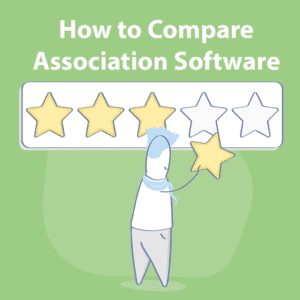
by Frank Kenny
The membership dues model known as “fair share” is unfair to your members and your chamber.
With fair share, every member gets the same features and benefits, yet some pay more than others simply because they have more employees, hotel rooms, or money on deposit.
This dues model fails to consider that a business’ wants and needs change over time. The needs of a startup business, growing business, and mature business are entirely different from one another.
Yet the fair share dues model treats them all the same.
Perhaps this is why so many people have the perception that dues are simply a charitable contribution, as members pay for things they neither want nor need.
There is a much better way.
Create a Tiered Dues Model with an Ascension System
With tiered dues and an ascension system, your chamber offers and prices the specific, bundled products and services that satisfy the current wants and needs of the member/prospect while adapting to the future wants and needs as they naturally arise over the life of a business.
For example, when a business is starting out, the owner will probably be shorter on money than on time. So, they will use that time to attend networking events to build their professional network. They may also be prospecting for leads during this networking time. Think of this Networking Level as Tier 1.
Over time, as that business owner becomes more successful, they will probably have more money than time. They would rather spend money to make money since they may not have the time to attend as many networking events. A business owner in this phase will take advantage of promotional opportunities that the organization offers. Think of this Advertising and Sponsorship Level as Tier 2.
A few years down the road, that same business owner may be ready to invest their personal time, money, and energy in furthering the quality of life in the area. They may want to serve on the board to give back. They may be starting to think about their legacy. Think of this Leadership Level as Tier 3.
And finally, after the business is very well-established, they will probably have a need to be able to recruit executive level talent at the company. They will be eager and willing to invest big money in projects that lead to great schools, hospitals, and outdoor recreational opportunities. Beyond attracting and retaining talent, they will want to invest in the area for the sake of their children, grandchildren, and employees. Think of this Corporate Level as Tier 4.
As you might guess, with the tiered dues system, most people start at Tier 1 and move up over time as their wants and needs change. Again, with this dues model, it’s not dependent on how many employees they have, how many rooms in their hotel, or how much on deposit in their bank.
With tiered dues, it’s not one-size-fits-all. Dues are no longer a donation. Dues are an investment.
But it goes beyond that.
A tiered dues model with an ascension system allows your organization to systematically move people up the tiers, where members happily invest at greater levels because of the return on investment (ROI) they are receiving, creating a significantly more profitable organization for you and your stakeholders.
With an ascension system, a member may come in at Tier 1, and your system offers Tier 2 at the appropriate time, such as at purchase or their first-year renewal, and they ascend to the higher, more valuable (to them) tier. Your system could also be set up to ping your membership salesperson or CEO when a member is about to renew, as it is an ideal time to communicate additional value to them.
New member businesses may “parachute” in, skipping Tiers. They could come in at Tier 3, for instance. So much the better, as each tier requires a larger monetary investment and generally consumes less staff time.
Avoiding the Pitfalls of the New-Member Onboarding Process»
When creating, selling, and ascending people up your tiers, think in terms of status and exclusivity. Tier 1 will be crowded. Tier 2 will have fewer members than Tier 1. Tiers 3 and 4 will be the cream of the crop of the local business community.
The status of being at a higher tier, and the ability to build relationships with peers at the higher levels, is a large motivator, especially among ambitious entrepreneurs.
To conclude, rather than selling a one-size-fits-all fair share program, offer your members and prospects what they want and need (with an ascension system). They will be happier, and your organization’s profitably will increase dramatically.
Frank Kenny is an internationally recognized author, professional speaker, and consultant. He is the founder of the Chamber Focus Show and the Chamber Professionals Community Group on Facebook.
Over the past 10 years, Frank has helped hundreds of chambers reach their goals with staff and member training, strategic planning, board retreats and orientations, social media, digital marketing, technology, and more.


